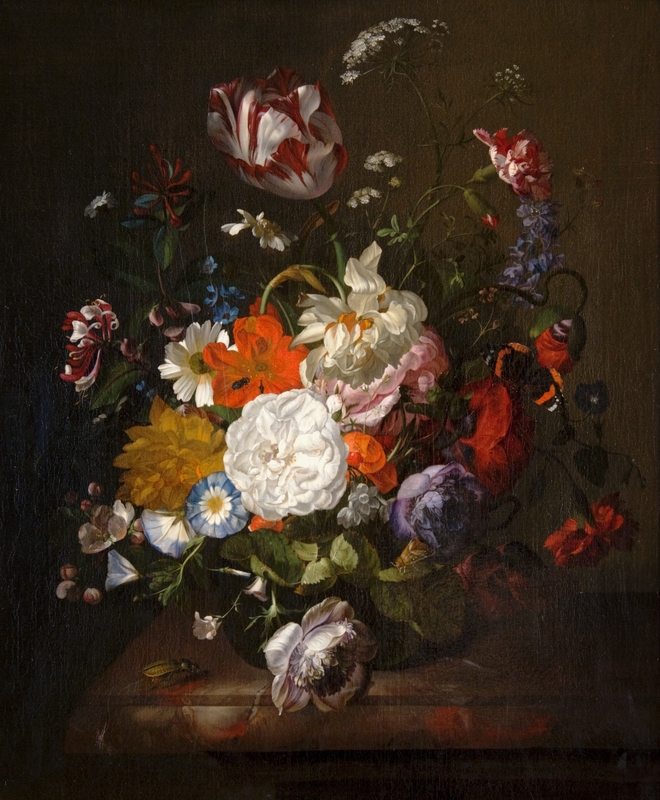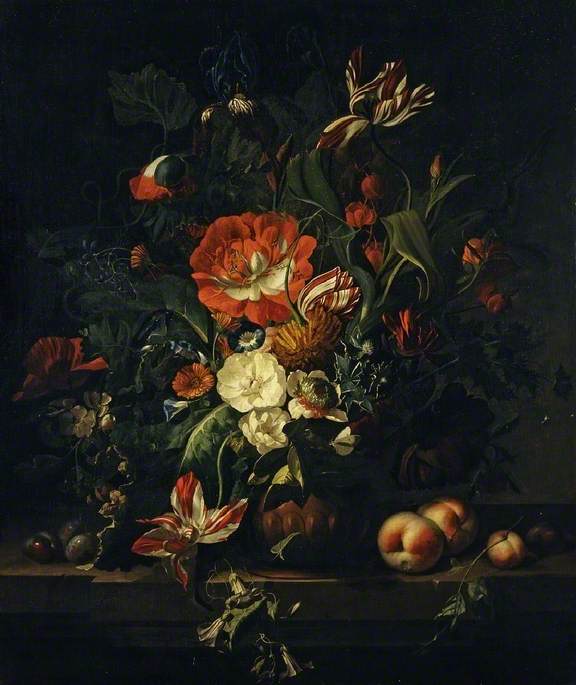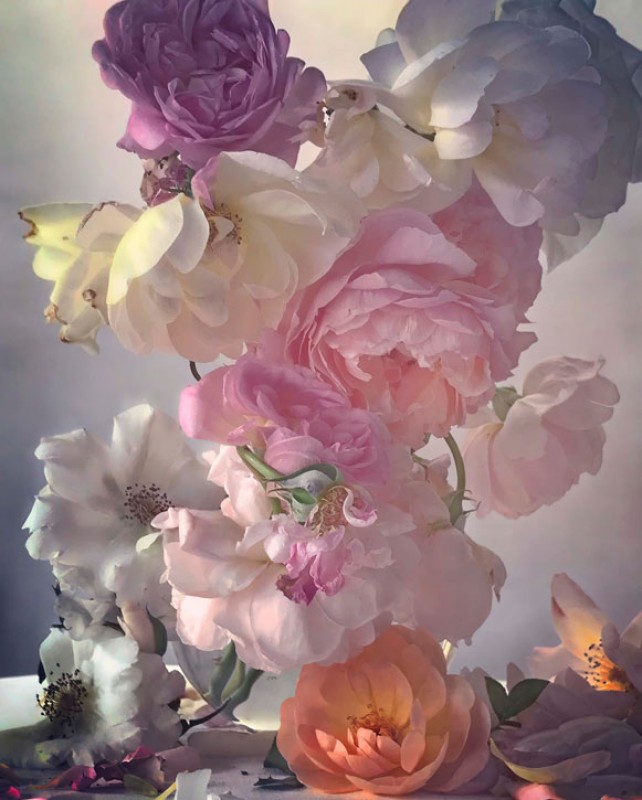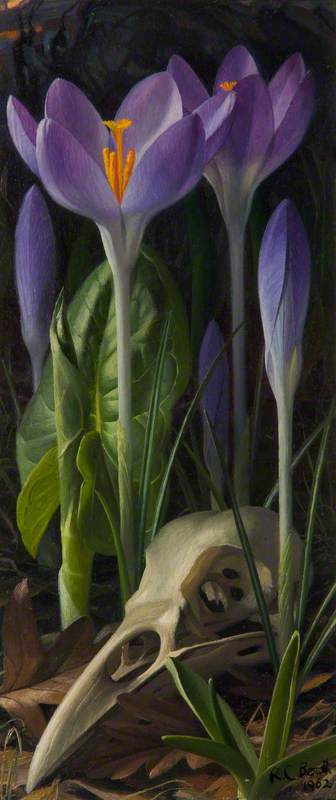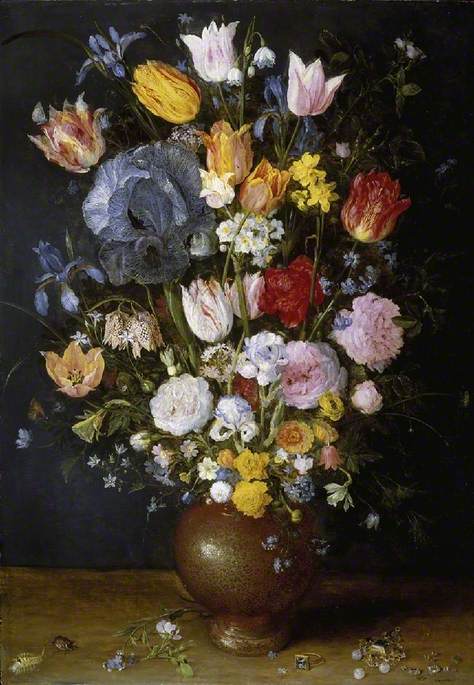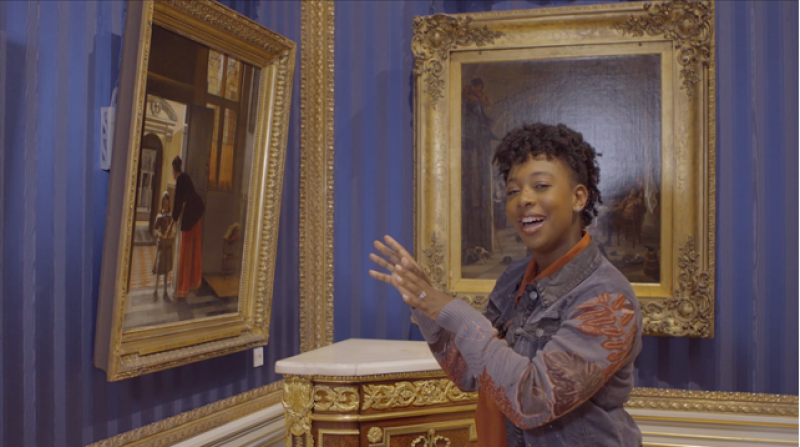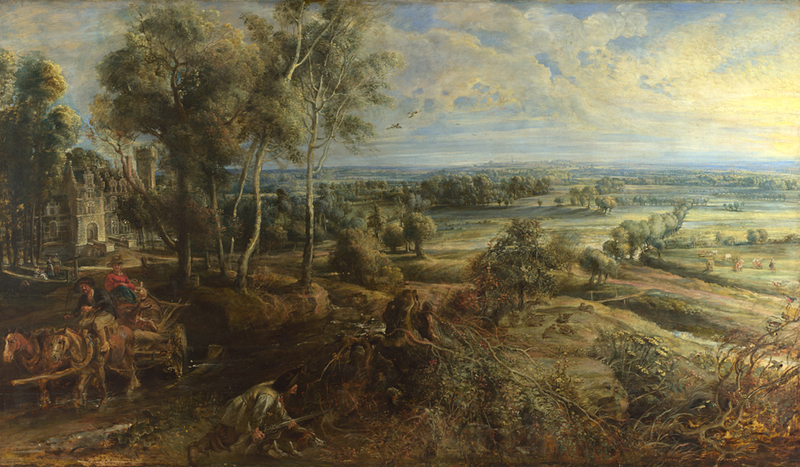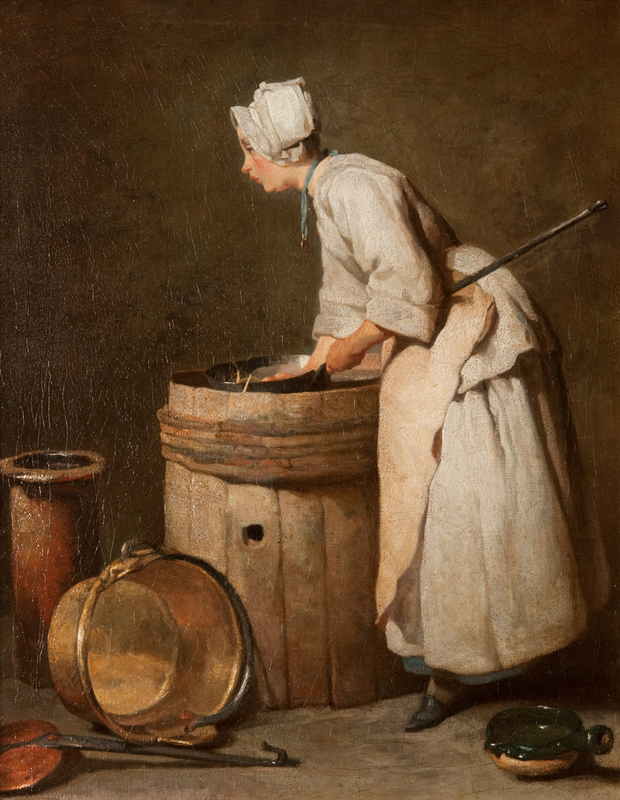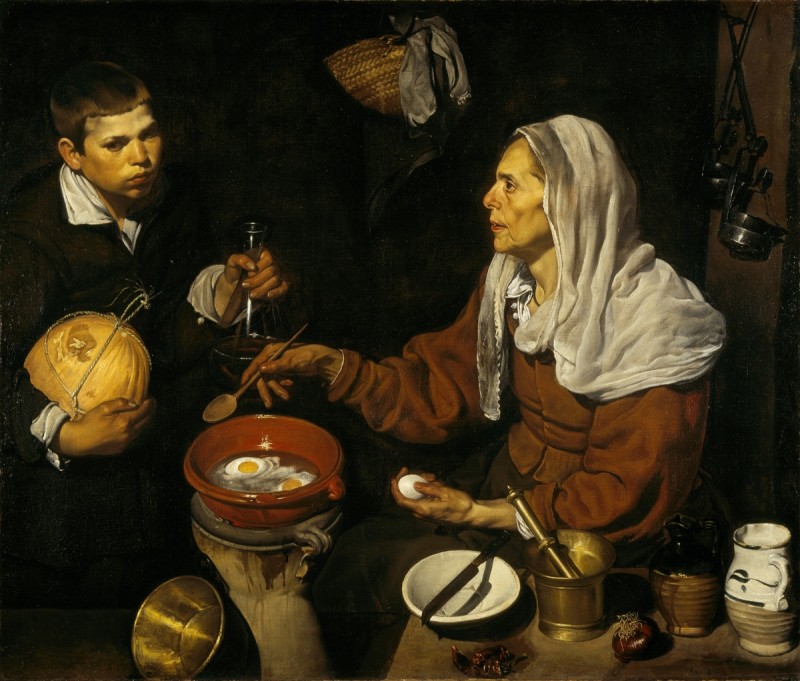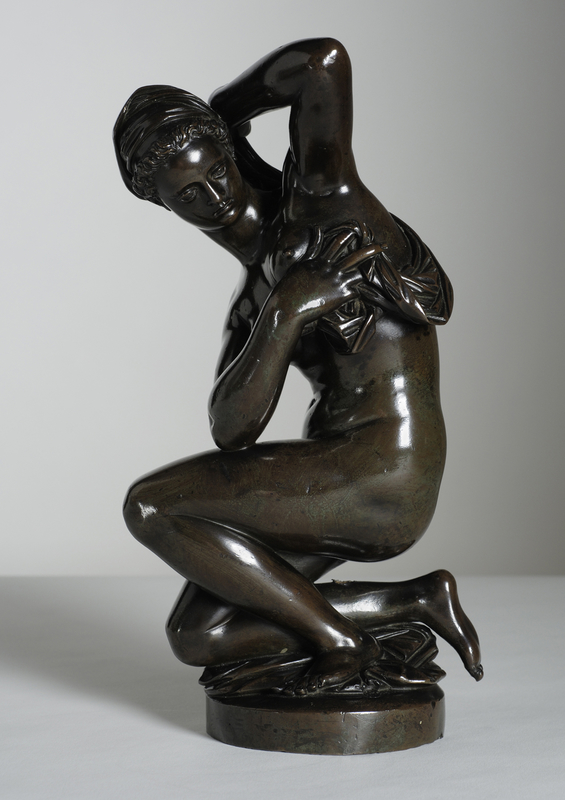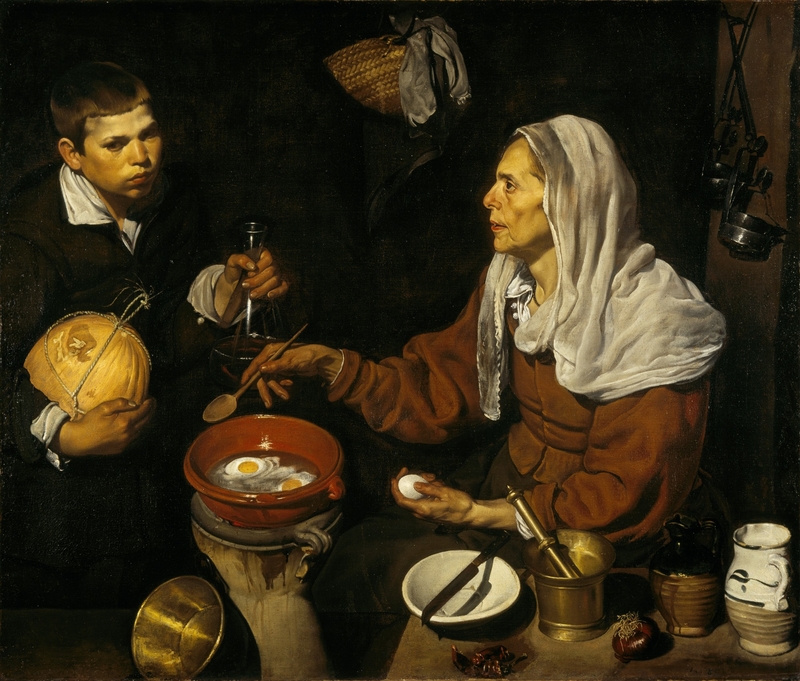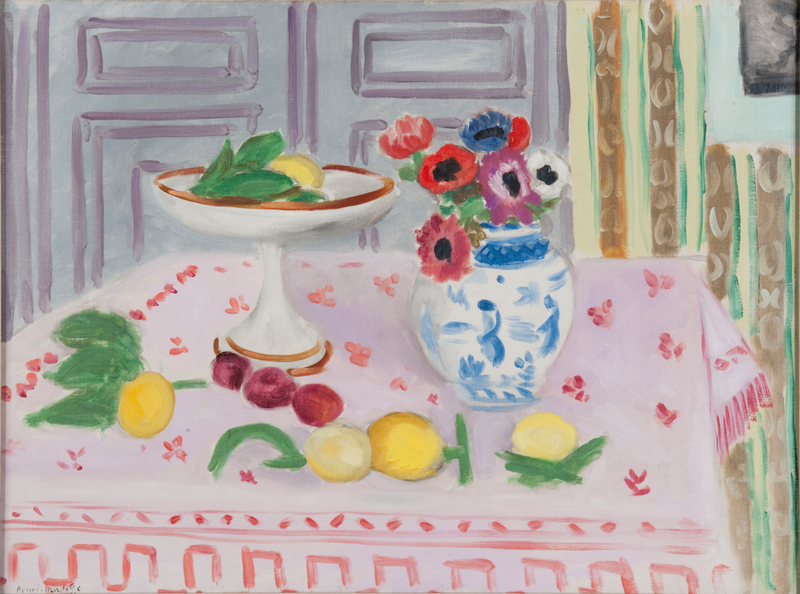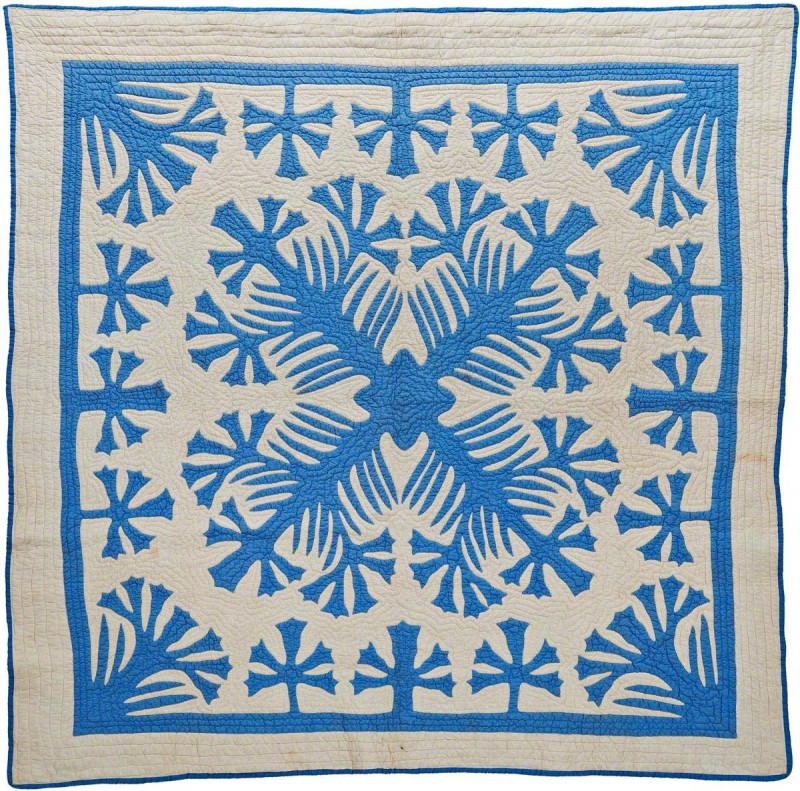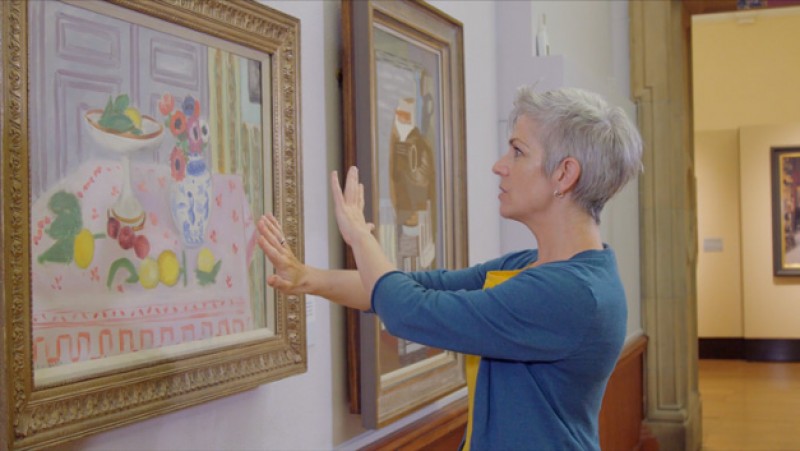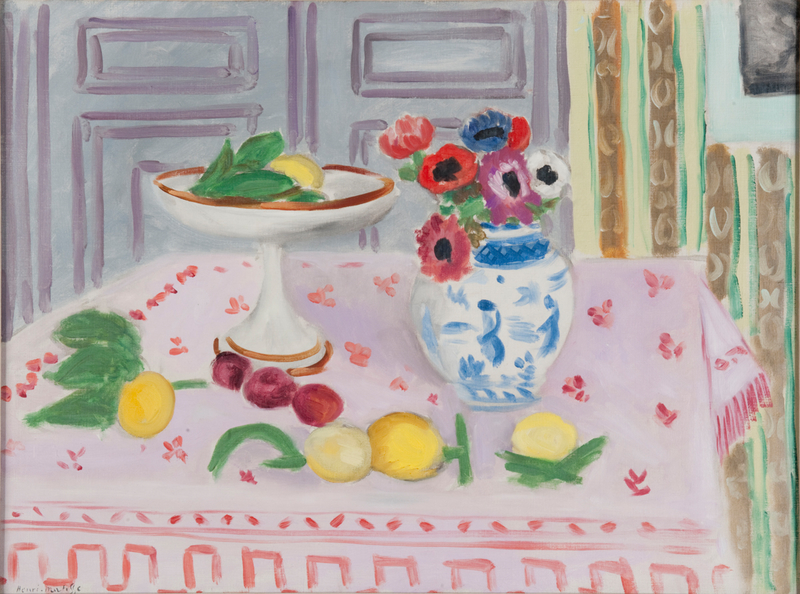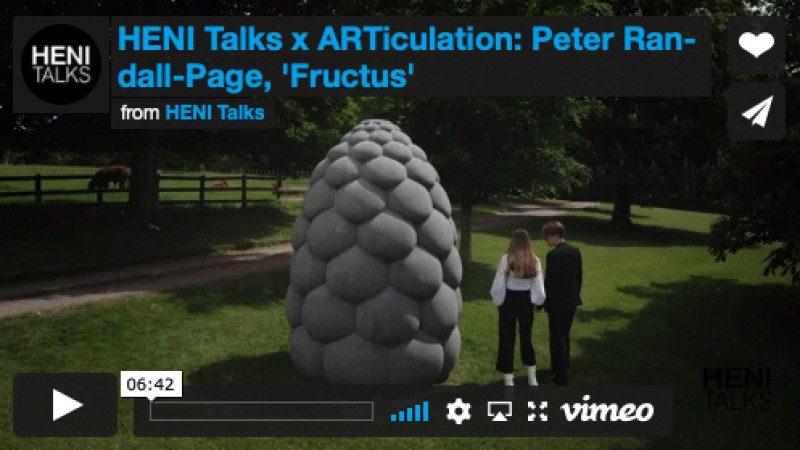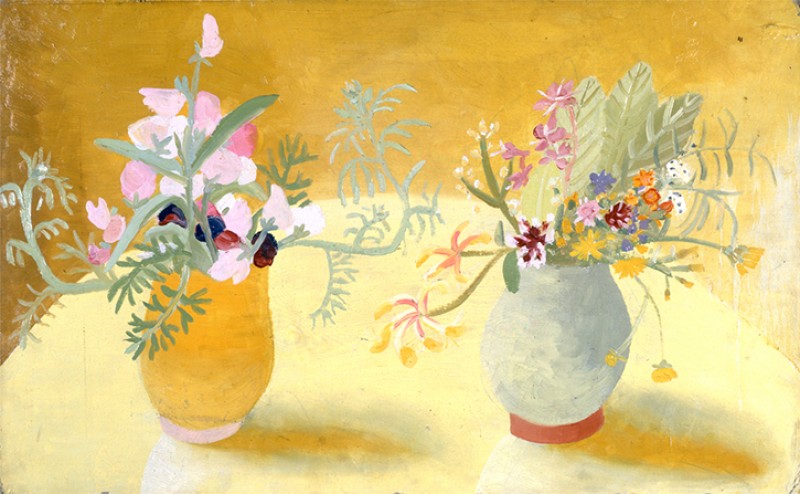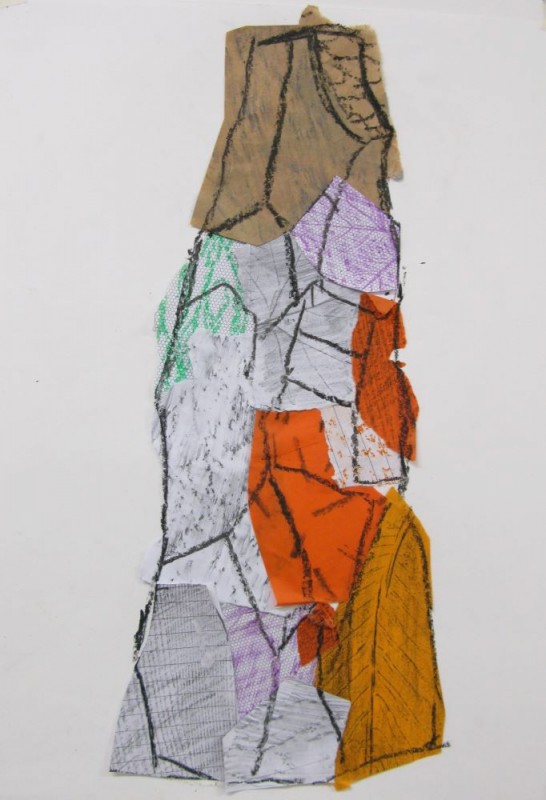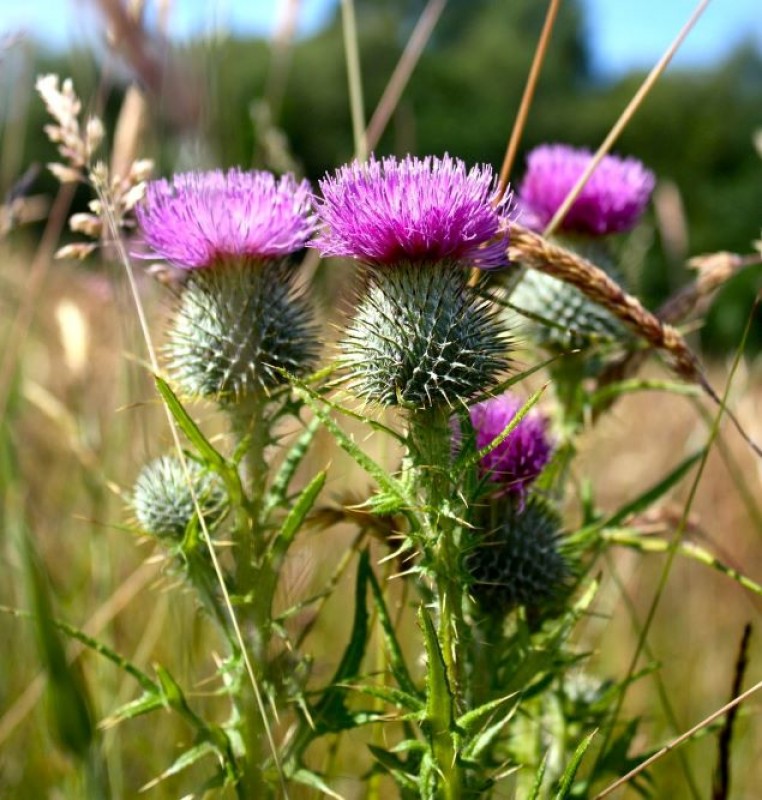Art theme: still life
Historically, 'still life' was a category of painting typically featuring objects such as fruit, flowers, insects and/or countless collectables. Some objects were invested with symbolic value, e.g. the flower can be a metaphor of life and death – beautiful in bloom, but quick to fade. Paintings were traditionally small in scale to hang in people's homes rather than in public spaces.
In recent times, still life appears in art in various forms from the abstracted (simplified but still recognisable) to the entirely abstract (not recognisable as anything in reality, but perhaps reduced to its essential shape or basic form). Still life can even be represented in the form of the 'found object' (an actual vase or table, etc.) and assembled and documented to become 'art'.
